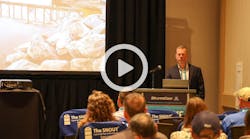
We’ve written often in the pages of Erosion Control magazine and on the website about the risks of deforestation and the benefits of revegetation and reforestation. One of the most immediate and deadly risks is landslide, like the one that occurred on August 14 near Freetown, Sierra Leone, killing 500 or more people (many others are still missing) and displacing tens of thousands. More insidious effects of deforestation include slower processes of erosion and soil degradation, desertification, and inability to manage water resources.
We have also sounded the alarm more than once about the dangers of introducing non-native species into an ecosystem and about the damage invasive plants can do; if you’re going to plant something, the general message has been, you should plant natives. That wisdom is being called into question by a recent study on Guam (which, granted, has had more immediate concerns of late). What do you do if the land is so badly damaged that native trees and grasses fail to get a toehold when you plant them?
University researchers in Guam have been documenting the use of non-native acacia trees for restoring the island’s barren savanna grasslands. Non-native, they point out, is not necessarily invasive. Says one author of the study, which was published in the Journal of Coastal Zone Management, “Most of these sorts of government-sponsored projects that use non-native trees are very mindful of the issue of invasiveness,” and use only species that don’t tend to take over.
The problem, they explain, is that the island’s harsh volcanic subsoils are hostile to most root systems, and few plants—even native ones—can become established once the more root-friendly topsoil has been lost. Without vegetation, the erosive process continues in a trend that’s very difficult to reverse. So when islanders found something that can grow and even thrive in the harsh conditions—and especially something that can halt erosion, as the acacia trees are doing—they planted lots of it, despite some concerns about the introduction of foreign plants and a few objections that trees of any kind should not be planted in former grassland areas at all.
It gets more complicated, though. Subsequent research has found that the acacia trees are actually altering the chemistry of the soil, and doing so in ways that native plants do not. The researchers can’t yet say whether that’s good or bad. “The results indicated the soil chemistry and root-zone nutrient budgets have been altered by the acacia tree cover, and the trajectory of change is in a direction that does not conform to any of the naturally vegetated sites from Guam. As expected, the various components of the nitrogen cycle were among the traits that were most altered by these alien legume trees,” according to this ScienceDaily summary. You can see the full article here.
About the Author
Janice Kaspersen
Janice Kaspersen is the former editor of Erosion Control and Stormwater magazines.

